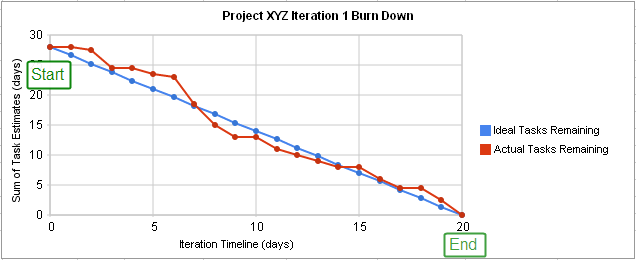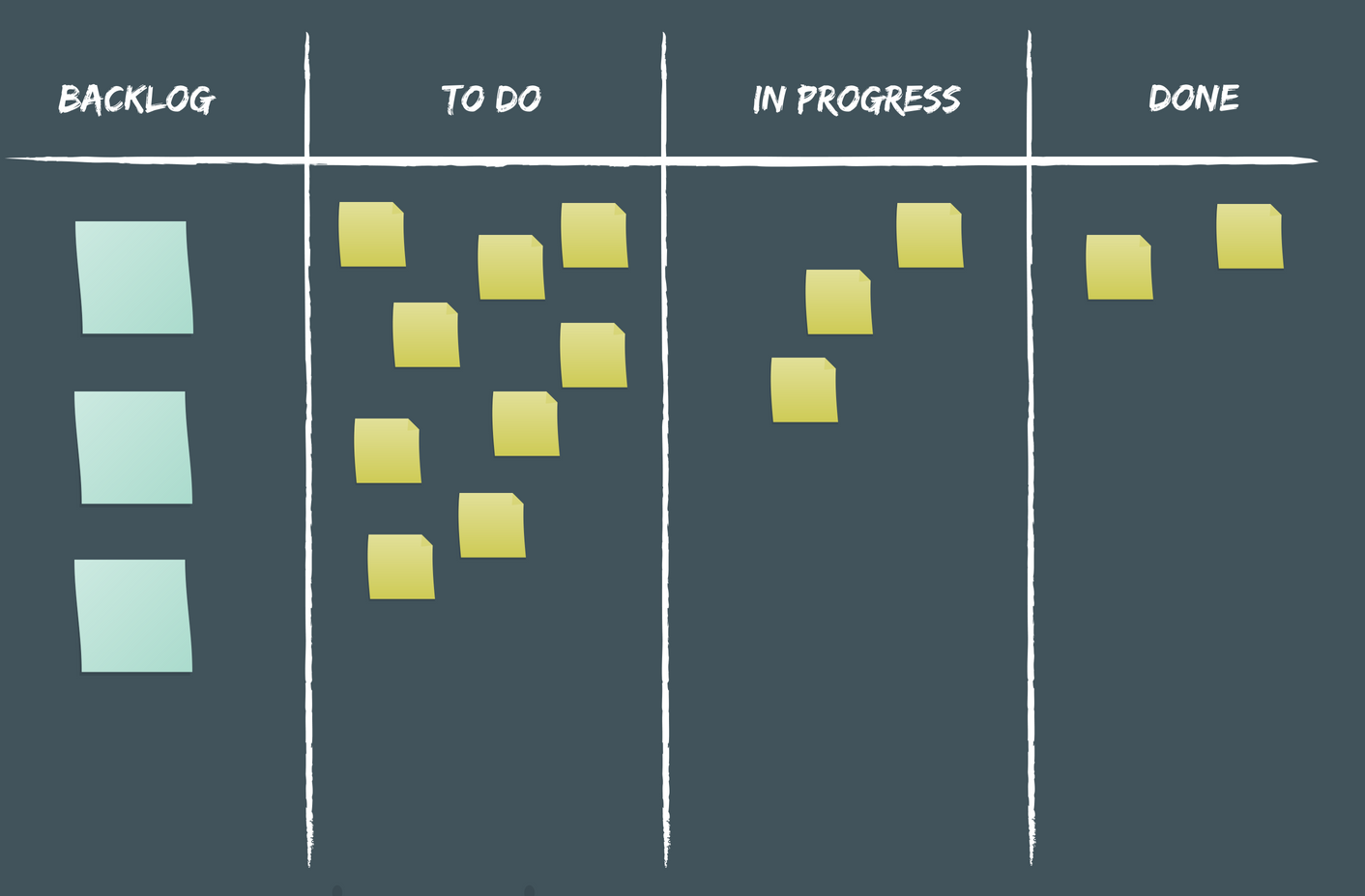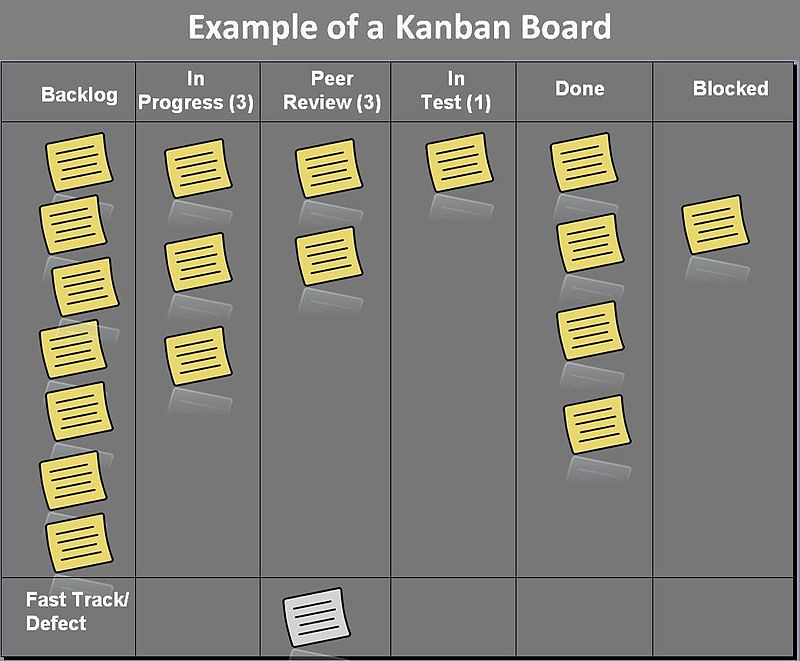Software Development Methodolgies
Software development is based on a model or set of principles which define the various roles and project stages involved. In this short brief, we explore the main ideas behind Software Development methodologies.
It is first important to note that models are usually not followed exclusively in any business, and that some aspects of two or more models will be applied. Overall, the business needs and team involved will dictate which aspects are followed.
From waterfall to agile
In the earlier days of software development, projects were built according to a waterfall model. The model is characterised by a sequence of steps that usually do not proceed until the previous one is complete (i.e. approved and documented):
- Requirements gathering
- Analysis
- Design
- Writing code
- Testing code
- Maintenance
The main drawback with the waterfall approach is that it does not accommodate change. Sometimes the customer will not know from the beginning what they need and they may also change their mind as the project is worked on. Such change would then involve going back and revising the plans.
Along comes the agile model, which is broadly more effective than waterfall models, particularly for larger projects and teams. The Agile Manifesto lists the principles behind Agile development.
Agile methods attempt to provide the customer with more opportunities to change things at any stage. It also attempts to deliver testable parts or components of the full solution so that it helps developers identify issues and provide fixes.
A key part about an agile team is the need to bring together technical and non-technical roles at all stages of the project. This so called cross functional team allows each member to contribute to all stages of the project.
Some of the roles are summarised below:
- Product manager - business and technically-orientated leader of the project, who generally identifies business opportunities for the product and provides overall management of the product
- Business analysts - individuals who work closely with the customers and the product manager to draw up detailed user (or business) requirements
- UX and UI designers - individuals who study how end-users perceive and respond to an interface, and then proceed to design an experience that enables to users to make best use of the frontend
- Backend developers - individuals who work on aspects of the product that are not seen by the end-user but nonetheless drive the business logic, usually through web services, bespoke microservices and some sort of database
- Frontend developers - individuals who build web clients (with the aid of a framework or templating engine) that translate backend logic into a form that a web browser can render, implementing the aforementioned UX and UI designs
- DevOps - development operations, individuals who focus on looking after the continuous integration of new software features and the continuous delivery of said features for testing or deployment to the company’s datacentre or a hosted platform-as-a-service
- Quality Assurance - individuals who perform manual and automated testing, working with all members of team to monitor user targets are met in a timely manner
The two main classes or frameworks of agile explored here are scrum and kanban.
Agile - Scrum
Srum assumes a fairly strict set of rules and principles for agile. The team, analogous to a rugby scrum, is formed of players with different roles, as cross-functional team. The other key parts of scrum include:
- Timed iterations, known as sprints
- A product roadmap and backlog
- Daily standup meetings
- Task estimates and velocity calculations
- Sprint planning meetings and retrospective Burndown analyses
The lead member is known as the scrum master.
The basic steps involved:
- Agreement of a high-level roadmap, between the team and the customer.
- Breakdown of the roadmap into manageable tasks. These tasks are then placed onto a backlog of tasks.
- The product backlog is a list of prioritised items covering features and bugs identified for the entire project that have not been implemented or addressed
- The spring backlog is a list of features that are planned for the current iteration or sprint. They are normally phrased as user stories, i.e. the “who-what-why” requirement, for example “As a … I would like to … because it …”
Sprints and meetings
Each sprint normally lasts around two to three weeks (varies according to the business or its needs) and is preceded by a sprint planning meeting. Here, the team decides which tasks should be placed on the sprint backlog.
In addition to the sprint planning meeting, each day (typically), the team meets for a standup meeting where each member attends a short meeting (standing up to keep the meeting short!) outlining what they have done, any problems encountered and what they will do for the day. Daily briefs keeps the team constantly updated.
Each sprint normally ends with a retrospective meeting, where the team analyses how well the sprint went. Any resultant action points, which are intended to improve some aspect of the backlog, are normally assigned to one or more team members, sometimes with a deadline, and made known to the whole team. The next retrospective meeting normally involves an evaluation of the progress made on previous action points.
There are times when the team meets for backlog grooming and refinement meetings. The former is mostly about identifying what items should be present on the backlog. The latter is about taking the time to analyse and possibly redefine or clarify existing backlog tasks.
Task estimates
Task estimates are a way of estimating the effort required to complete a task. They are normally framed in units of time or complexity. The former simply indicates how long the team expects a task to be completed, where the latter indicates how many story points (units of measure that define the difficulty of a task) are expected for a task. A task estimate of “time of” two days, or, “effort of” four story points implies which type of estimate was applied.
Developers will quite often prefer to think of estimates in terms of complexity, whereas product managers usually want to know how long a task will take to implement. Either way, they correlate: more complex problems need more story points and more time to complete. The number of story points a team can complete in a given sprint is referred to as the velocity of the team.
Each task estimate (by time, shown below, or by complexity) can be mapped to a burndown chart:
 |
|---|
| By I8abug - Own work, CC BY-SA 3.0, https://commons.wikimedia.org/w/index.php?curid=15511814 |
The team’s velocity is related to the slope of the plot and is used to plan subsequent sprints, making sure that the number of estimates does not exceed the existing team’s capability.
Sprint boards
The backlogs are presented on a scrum board or sprint board. The product backlog is normally presented on the left and the sprint board is presented to the right.
 |
|---|
| A sprint board |
It typically lists the product backlog, with estimates where known, and the current sprint board according to:
- To Do - needs working on but not assigned yet
- In Progress - assigned work
- Done - the definition of “done” can vary considerably here and would have to be agreed by the team; it normally represents a task that would be taken off the backlog at the next sprint planning meeting
Agile - Kanban
Kanban has its roots in the automotive industry and is considered the less rule-bound model of agile, at least compared to scrum. There is no concept of a sprint and as such, kanban focuses more on tasks as defining points.
There are concepts from Scrum that do carry across to Kanban and are mentioned next.
Planning and cycle times
Much of the planning for Kanban teams is just as applicable from Scrum teams.
The team gathers to decide which tasks should be moved from the backlog to the “To Do” column of a Kanban board. The product backlog is normally presented on the left and the kanban board makes up the other columns presented to the right.
 |
|---|
| By Dr ian mitchell - Own work, CC BY-SA 2.5, https://commons.wikimedia.org/w/index.php?curid=20245783 |
Kanban uses the concept of cycle time instead of velocity when establishing project metrics. Cycle time is the time needed to move a task from the “To Do” column to the “Done” column. Teams aspire to reduce cycle times, and this is normally achieved by defining self-contained (decoupled), simplified tasks.
Some teams also define lead times which establish the time between task conception and task completion. This tends to be more useful or helpful for product managers. Knowing the task’s cycle time and lead time allows the team to optimise subsequent project plans whenever they deem it necessary.
The main restriction imposed on a Kanban approach is the number of tasks assigned to a particular column. When a task can be advanced to the next stage (from “To Do” to “Testing” or similar), it shows where the team as a whole is with respect the overall project development. If there are too few tasks in the “To Do” column, considering the number of team members available, the product manager can call a meeting and adjust the kanban board. If a task is stuck in a column for a period longer than a typical cycle time, then the team can pitch in to help where needed.
Issue trackers
Software development teams can manage their project with issue tracking software that span the spectrum of agile development. There are lots of solutions available! The following is not intended to be representative or exhaustive:
Teams also adopt elements from both scrum and kanban, known unsurprisingly as scrumban. The above project management tools provide more details about all above development models, framing it according to the services they provide.